A World of Applications for ArDB
ArDB has no limitations on the data types that can be held within the database.
So no matter what analytical techniques you are using, what type of samples you are working on or what type of instrumentation you use, ArDB is entirely flexible to accommodate your requirements.
Here are some more ideas to show you how ArDB might be able to help you with your work.
Want to see how ArDB can work with your application?
ArDB is designed to work with practically any data type that you generate and so is capable of working with almost any application.
If you would like to know more about how ArDB can work for you or would like to see a live demonstration of the software then please do not hesitate to contact us today.
A Better Alternative to Excel Worksheets
Most scientists love a good Excel worksheet, but we’ve all encounter times when a rogue comma or incorrect set of brackets in a formula makes the whole thing fall down.
Strangely many labs rely on Exel sheets to handle their most precious commodity, analytical data.
Even when all the formulas work correctly (and are locked for editing) Excel has many drawbacks over a purpose-built data handling package.
ArDB has an application wherever you see an Excel sheet whose data needs to be trusted, shared, integrated and stored for posterity.
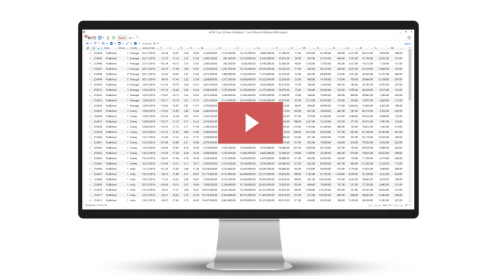
LIMS Alternative
From experience, LIMS packages have a bad reputation, mainly due to the time and cost needed to implement them effectively.
This results in many labs going to the other extreme and keeping all data in Excel sheets.
ArDB is capable of filling the void between the humble Excel sheet and a cumbersome LIMS platform.
Many of the LIMS benefits can be easily integrated for a modest investment.
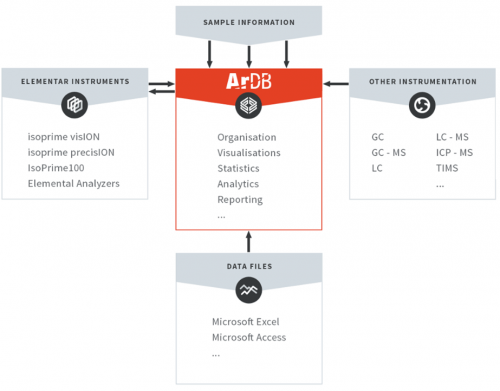
Contract Laboratories
Contract Testing labs handle vast quantities of data as it is essential to their “product”, so it would make sense that they should utilize the most integrated and secure method of collecting and reporting this data. However, it is commonplace for these labs to rely on Excel spreadsheets or in-house custom databases.
With ArDB, results from any manufacturers instruments can be collated into one place and linked to QC results. The data is then protected and stored securely so no loss can occur. This makes audits straightforward so your analysts can concentrate on what they do best.
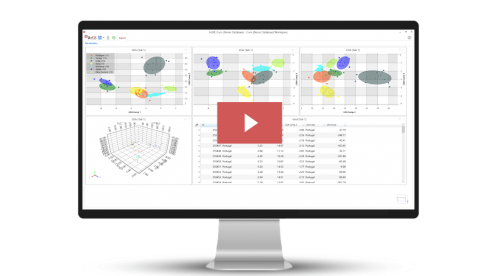
Quality Control within Manufacturing
Within manufacturing companies, products must be checked prior to release.
The pressure is often on to report results quickly, but failures must be investigated and mistakes can have big consequences.
ArDB can help reduce errors and ease investigations to prevent the analytical lab from being a bottleneck in the manufacturing workflow.
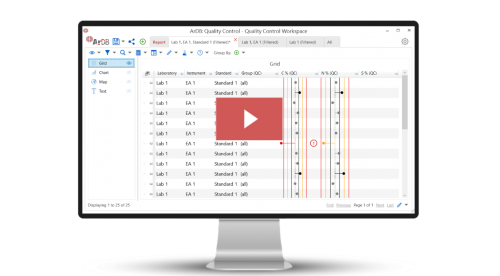
Food Authenticity
Analytical techniques which can detect fraudulent adulteration or the mislabel of premium and protected foods.
Compiling a unique analytical signature of an unknown sample and comparing it to a database of known authentic samples can accurately determine the true origin of foodstuff, guaranteeing the safety of the public as well as the future of these specialist and traditional foods that deserve our protection.
Analytical techniques can also be used to confirm the use of organic farming practices, or the addition of cheaper additives to a premium product, ultimately protecting both the consumer, and the reputation of genuine suppliers.

Learn more about isotopes in food authenticity
Meteorology
Stable oxygen and hydrogen isotope analysis of environmental waters can provide a unique understanding and characterization of many hydrogeological systems.
Determination of these isotopes gains an understanding of reservoir residence times, groundwater recharge rates and mixing models.
The isotopic variation of precipitation over the globe provides a fundamental starting point for many other applications such as Ecology and Food Authenticity which make use of the ability to geo-locate samples from their oxygen and hydrogen isotope signature.
ArDB is supplied with a snapshot of the Global Network of Isotopes in Precipitation (GNIP) database to help establish your particular application.

learn more about isotopes in meteorology
Ecology
The use of stable isotopes for ecological studies allows the subtle interactions between organisms and their environment to become clear.
By understanding that organisms develop their own intrinsic isotope signature as a result of the environment that they live in, then if a database can be compiled recording the isotope signatures of various parts of an organism's anatomy it can serve as a way of proving the origin of the organism.
For example, the isotope signature captured of a bird feather can help to uncover migration patterns by relating the 2H and 18O signatures in the feather to the GNIP database.

Archaeology
Stable isotope analysis has proven to be of great use when tracing the ancient movements of our ancestors through time.
Stable isotopes of oxygen, strontium, and lead in archaeologic specimens are highly dominated by local geology and climate which then allows the specimen to be geo-located by comparing against databases of other specimens.
For example, the 18O isotopes in the tooth enamel of a skeleton are related to drinking water which can be geo-located thanks to databases such as GNIP.

Forensics
Harnessing the power of the unique stable isotope fingerprint makes it possible to determine similarities between different drug seizures and so follow trafficking routes back to their original clandestine source.
The same principle can be applied to other criminal materials such as explosives or counterfeit money and goods.
Stable isotopes can also be utilized to put unidentified corpses into geographical context by comparing the stable isotope fingerprint of hair, bone, tooth, and nails with known databases to evaluate the life history of the victim.

Geochemistry
When you are in the field and taking samples to bring back to the lab the spatiotemporal relationship of your samples is going to be of great interest.
With ArDB's functionality as a Geographic Information System (GIS), these relationships can be elucidated and visualized.
ArDB also brings great benefit to researchers working alongside other laboratories on collaborative projects with its cloud-based database server giving all stakeholders easy access to the database.

Monitoring Instrument Performance
When analyzing your precious samples in your laboratory it is essential that the instrument performance is at the best possible level.
ArDB can be used as a tool for evaluating your instrument performance over time by recording instrument results over a period of time.
By passing your quality control standards into ArDB you can use the built-in quality control tools to easily track the performance of the system and get ahead of any possible maintenance before it becomes a problem.
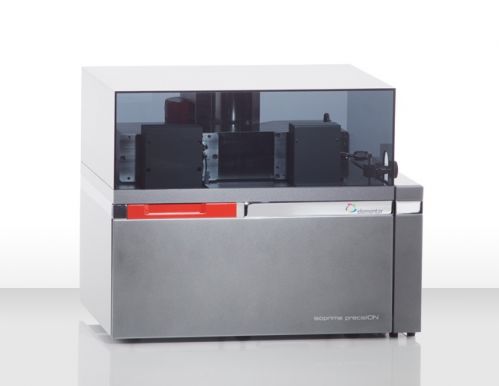
learn more about quality control
